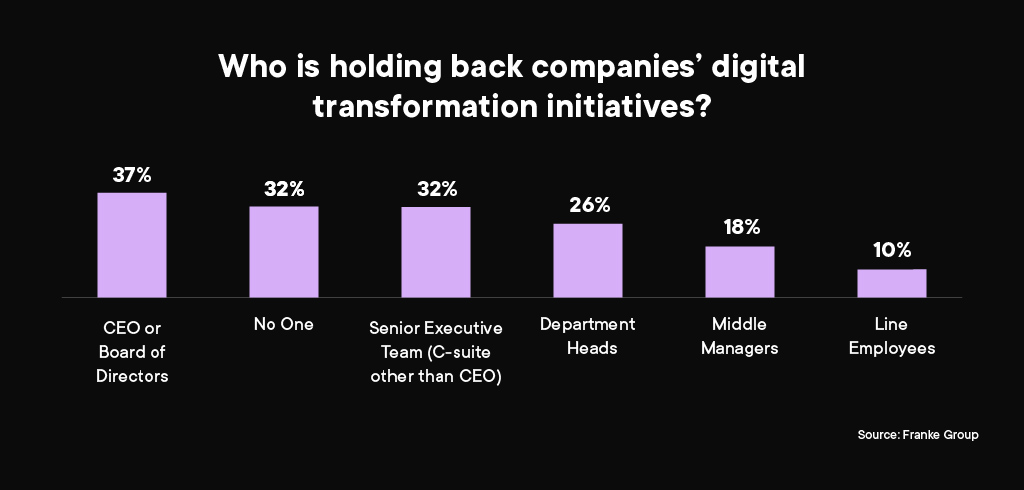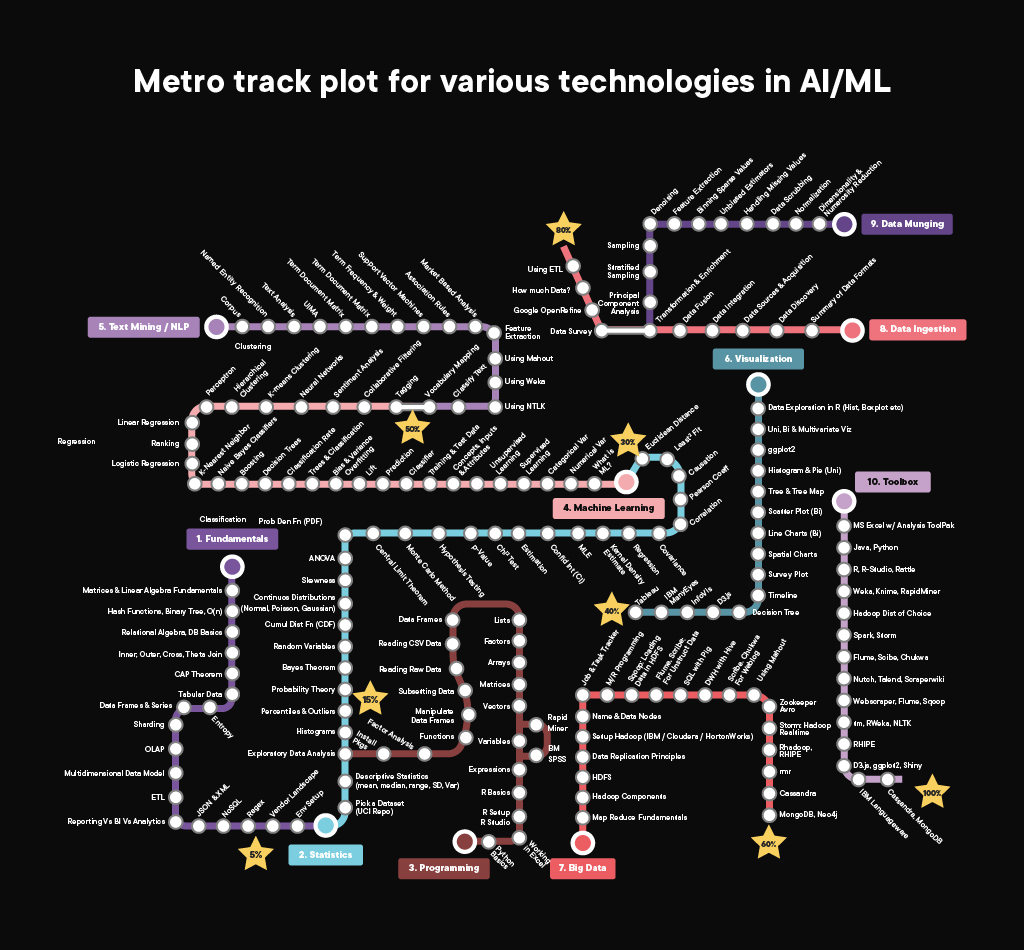AI/ML for You, Me, and Everyone

Enterprises are adopting technology at an unprecedented speed as COVID has fast-tracked the digital transformation journey by a couple of years at least. Enterprises are focusing on innovative solutions to enhance customer satisfaction, optimal cost management, planning, etc., to stay ahead in the market; this is where digital transformation plays a critical role.
Where does AI stand in Digital Transformation, and how does it matter to businesses?
Digital transformation integrates digital technology into different verticals of any enterprise, such as operations, delivery, and management. It is defined in four broader categories: process transformation, business model transformation, domain transformation, and organizational transformation. Process transformation mainly focuses on analytics and artificial intelligence-driven insights to automate processes and robotics, whereas business model, domain, and organizational transformations are centered around strategic decisions. Business model transformation redefines a company’s digital journey and how it adds value to its customers and overall business. Domain transformation fuels company growth by expanding the businesses into new domains, and organizational transformation is about adopting best industry practices within the organization.
The digital transformation market is expected to surpass the 1 trillion USD mark in 2025 from 469.8 billion USD in 2020 at a compounding growth rate of 16.5%.
Machine learning and artificial intelligence are niche technologies, and companies have started thinking about or utilizing these technologies aggressively as part of their process transformation journey. Market experts estimate that artificial intelligence-driven solutions will add approximately 13 trillion USD to the global GDP by 2030 and transform the world as electricity did almost 100 years ago. The research report below supports this prediction by depicting the three key digital transformation statistics that will play a crucial role in transforming an organization’s business.



These advancements have changed the demand curve for data scientists, machine learning, and artificial intelligence technologists. Artificial intelligence-driven digital solutions require cross-collaboration between engineers, architects, and data scientists, and this is where a new framework, “AI for you, me, and everyone,” has been introduced.
AI for you, me, and Everyone framework

Before designing any machine learning solution or application, architects must understand the complete landscape. If they fail to understand it, challenges such as productionize ML pipeline, automated retraining, real-time inferencing, etc., will affect their workflow, which they never experienced outside the machine learning environment. The same reasoning applies to product owners and engineers, and they should be familiar with the areas where AI/ML can be applied or cannot be applied, along with its limitations. COVID has sparked the demand for data scientists at an all-time high, and this skill is in short supply.
In one of the survey reports, I found that over 50% of the workforce will be preparing for artificial intelligence or technologies revolving around data science, and corporates have started investing heavily in upskilling the talent internally. This is where the “AI for you, me, and everyone” framework becomes applicable as it ensures that over 50% of your workforce is upskilled around data science enabling workflows.
Daunting Challenges of business across industries
- Software companies are finding it tough to onboard data scientists, ML engineers, ML architects, or product owners who understand industry-wide machine learning applications
- The upskilling resources are time-consuming as they have to go through a completely new technology stack
- Theoretical knowledge is not sufficient, and people can’t be productive unless they have hands-on experience
- Lack of bandwidth from office work, perseverance, benefits, and industry trends keep people unskilled or unaware of these technologies
How does “AI for you, me, and everyone” framework help overcome these challenges?
Companies driving digital transformation should follow industry-wide best practices, and the “AI for you, me, and everyone” framework helps them to upskill their internal talent pool. This framework will not only help companies to ramp up their skills but also help in delivering projects involving trending AI/ML technologies within timelines, increasing market share, mitigating unknown risks, driving client innovations, and many more.
1. Learning paths: Companies must define a curriculum for employees based on their core skills, and enthusiasts must learn artificial intelligence and its enabling technologies with respect to their core skills, as it will help them to get onto the ML track quickly. The below representation is a high-level visualization for Data scientists and ML engineers, which depicts how enthusiasts can transform their career path toward AI/ML or ML engineering. It covers 10 broader areas of AI/ML and ML engineers, and professionals should have a fundamental understanding of these techniques and their applicability.

- Data Scientists: Data scientists are primarily responsible for building AI/ML solutions and mathematical models and extracting data insights. They should be very well versed in Python, Jupyter notebook, TensorFlow, PyTorch technologies, mathematical concepts used in algorithms, model building, and communicating results to the stakeholders. It is always a good idea to familiarize yourself with at least one cloud AI/ML services, as it gives an edge to your skillset.
- Architect / ML Engineer: ML engineer or data engineer needs to be well versed with OOP (Object Oriented Programing) concepts in Python, Spark, data ingestion, storage, scalability, pipeline creation, and deployment. They also need to have a good experience in various cloud services, along with their benefits and limitations. ML engineers usually deal with multiple tasks ranging from data acquisition from multiple sources, aggregation, processing, and storage of the data for further analysis. This workflow should be automated by setting up ETL pipelines.
- Product owners: They should be aware of the latest happenings in the market, including the challenges companies are facing and how you can help them overcome such challenges using AI/ML. In fact, they should also be aware of AI/ML limitations, prerequisites, and areas across industries’ wide applicability as they are going to drive the customer requirements along with a complete review of the client problems, competitor analysis, and designing a comprehensive roadmap for the client.
2. Training: Companies should design a month-by-month training curriculum targeting the business and technical side of emerging technologies or the role of AI in the modern world, which would help them learn these technologies. Such training programs will not only help the people to grow in the learning curve but will also help the company in the long run by having a competitive edge along with credibility and trust.
3. Certification: People should be encouraged to take AI/ML programs certification as it increases their technical competency. Companies should take the full or partial cost of such certifications and include certification programs in their quarterly or yearly goals. This approach will set the standards and motivate employees to upskill and complete the certification assessment.
4. Mentorship: Training programs are generally centered on imparting theoretical knowledge, but in reality, people come across many more challenges that no book talks about. Companies should assign a problem statement to the employees to work on who are undergoing technical training programs and assign a mentor to supervise them during their solution time. Once the candidate successfully implements 2-3 solutions then they will be comfortable taking on the research themselves and approaching a new problem independently with initial level guidance.
5. Involvement: Employees should be involved in a project where they will get a chance to work closely with the team on a real-time client dataset and problem. Working on a real-time project allows employees to work with seniors in the team, improves the learning curve, and boosts the employees’ confidence level.
6. Competitions: Employees should be motivated to participate in Hackathons and competitions to improve their skillset. These opportunities and platforms help employees ideate and implement a prototype quickly and get a chance to identify other challenges and find solutions accordingly.
7. Academic Collaboration: The gap between academic institutes and industry is prevalent and needs to be filled in. Companies should leap one step toward and initiate research programs with professors and Ph.D. students. Companies should go back to the institutes with the potential industry problem to find the right solution for it. This way, both professionals and students can learn from each other and solve new problems in their respective industry.
Exploring the AI/ML use cases:
Every industry is leveraging machine learning to optimize internal and external processes, and it is helping them to make data-driven business decisions. There are many use cases where artificial intelligence (AI) or machine learning is one of the crucial elements. During their training, mentorship, or certification program, AI enthusiasts can pick any use case from the below themes:
- Personalization in media, entertainment ecommerce
- Forecasting in supply chain management
- Cost / Resource optimization
- Root cause analysis for machines
- Chatbot for interactive query resolution
- Defect detections in manufacturing units
- Sentiment analysis for any product, policy, content
- Fraud / Anomaly detection
- Object detection in an image or video
- Image / Audio / Video Analysis
- Language translation
Final Words!
AI/ML isn’t a silver bullet. While it can be a powerfully transformative technology that provides enormous value, getting started and learning how to implement AI/ML in your organization doesn’t have to be overwhelming and burdensome. If you’re intrigued by using AI/ML in your organization, this is where you start. Dive into small, manageable pieces to see what works for your business. Bet on technologies aligned to the business context and solve your critical challenges. Schedule a call today to know more about our success stories and AI capabilities.